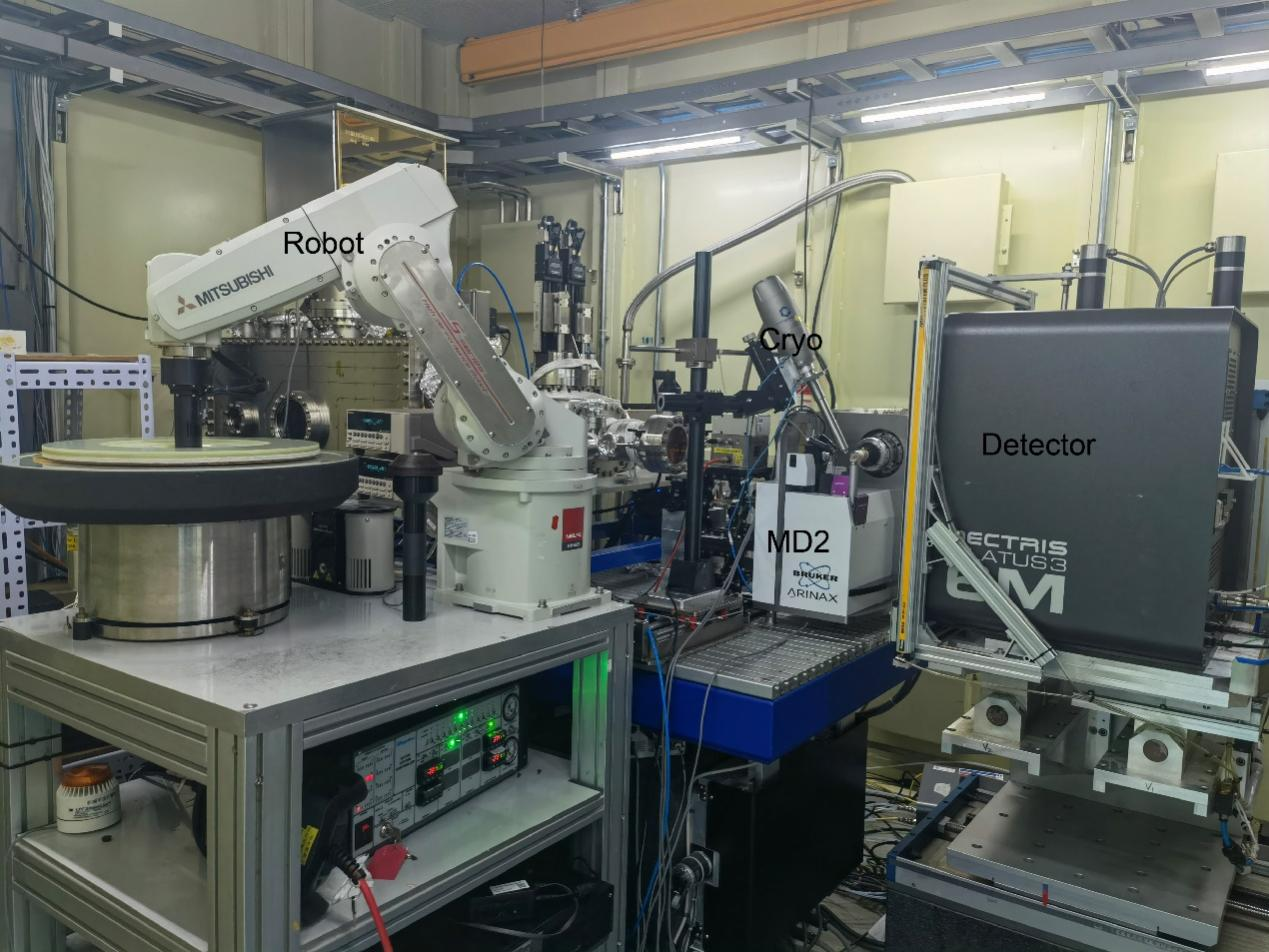The experiment station is located at the end of the crystallography beamline. In the experimental station there are several important devices such as a detector, a diffractometer, a sample changer, a fluorescence detector, a cold current, an ion chamber, attenuators and more, as shown in Figure 2.

Figure 2 The The overview of BL18U1 experimental hutch
A highly integrated Maatel MD2 diffractometer is equipped in the BL18U1 experimental hutch, the sphere of confusion(SOC) of the installed MD2 diffractometer is smaller than 1.5 microns. The incident beam passes through an aperture with three pinholes of 10, 20 and 50 microns in diameter. Next to the aperture is a capillary beamstop, which consists of a capillary and a beamstop. The capillary has a diameter of 150 micrometers and a length of 3.0 cm. It effectively shields the scattered beams coming from above before they hit the crystal in the sample field. The beamstop prevents direct beam from hitting the detector.
For a better view of the crystal, a pneumatically operated backlight and two front lights are also integrated into the MD2 system. A motorized scintillator/photodiode pole is also integrated into the MD2 system for convenient visualization of the beam position and monitoring of the intensity.
The BL18U1 beamline is equipped with a high-performance Pilatus 3 6M detector. The detector has dimensions of about 420 mm x 434 mm, with 0.172 x 0.172 square microns in each pixel, and has a full frame rate of 100 frames per second, with a 0.9 ms readout time for each frame. The detector has been in constant operation for more than nine years without any breakdown. An automatic sample changer, the Rigaku Actor Sample Changer, is used for fast and non-intervention sample transfer. Its dewar accommodates 5 unipucks, each of which holds 16 samples, and thus the diffraction of 80 total samples can be tested or collected for each batch of experiment.
The crystal is cryo-cooled by the Oxford Cryostream’s Oxford 800 series. The cryosystem can maintain the temperature in the range of 100 to 400 Kelvin of the sample,
To protect the sample from ice-forming, careful maintenance of temperature and humidity in the experimental hutch is critical. Therefore, an air-conditioning system was installed in the hutch, and the temperature could be controlled at 25 ± 1℃. An industrial dehumidifier was also installed to maintain the humidity in the hutch within the range of 46%~52%
附件下载:
